
Home » Characterisation » Atom Scattering » SpinEcho
The SpinEcho is an atom beam line that uses He-3 to perform atom scattering experiments. The experiment is performed under high and ultra-high vacuum and involves scattering a polarised beam of helium (He-3) atoms off the sample. A custom sample transfer (compatible with MiniScat) is used for mounting samples within the scattering chamber and gaseous, liquid, and metallic species may be dosed in the scattering chamber. The apparatus has largely been built in house and therefore uses a number of bespoke components.
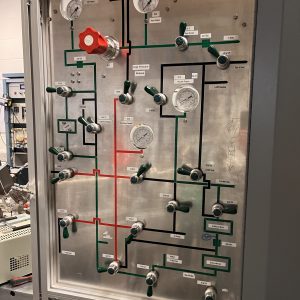
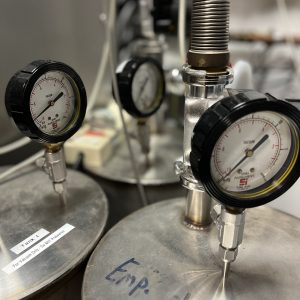
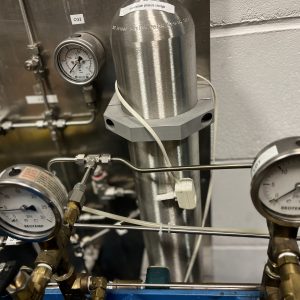
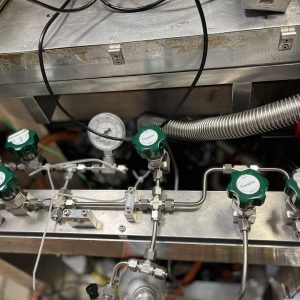
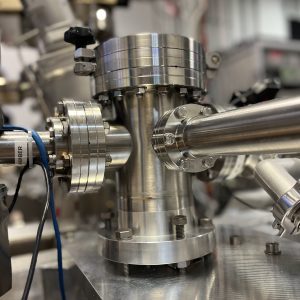
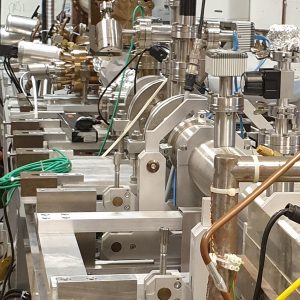

The SpinEcho is an atom beam line that uses He-3 to perform atom scattering experiments. The experiment is performed under high and ultra-high vacuum and involves scattering a polarised beam of helium (He-3) atoms off the sample. A custom sample transfer (compatible with MiniScat) is used for mounting samples within the scattering chamber and gaseous, liquid, and metallic species may be dosed in the scattering chamber. The apparatus has largely been built in house and therefore uses a number of bespoke components.






Item | Value |
|---|---|
Temporal range (of dynamics) | 0.1ps - 10ns |
Energy loss range (for phonon characterisation) | meV scale to μeV scale |
Sample temperature range | 20K – 1100K |
Sample chamber vacuum range | 1e-10mbar – 1e-7 mbar |
Incident beam energy | 8meV standard (6-10meV may be used for certain experiments) |
Beam spot size | ~3mm diameter |
The substrate must be a single crystal of at least 5mm dimension. Dosing of gaseous, liquid, and metallic species is possible (please contact if you have a specific requirement). In general substrates should be able to withstand temperatures >100C. The sample mounting/sample transfer is not compatible with other techniques, therefore the substrate must be mounted in atmosphere on the custom sample cartridge.
Experiments are unlikely to be completed in less than one week of beam time.
The primary use of MiniScat is to support experiments performed on the SpinEcho. Often if new substrates/samples are used then a preliminary atom scattering study will be performed prior to the principle experiments on the SpinEcho, these measurements may take 1-2wk depending on the complexity of the substrate and any dosing/growth processes being studied. MiniScat provides a cheaper and less in demand beamline for these preliminary studies. In addition studies of helium diffraction, thermal desorption and uptake may be performed straightforwardly on a simple compact machine. Usual operation of the apparatus involves a researcher coming in person for the length of the experiments to perform the experiments with the support of an instrument scientist, technicians and local users. For theorists or groups that cannot send researches to the facility we offer a “full service” package where an expert in the field can help design and run your experiments.
Fully operational
Whether you are new to the National Facility or have visited us before, our Getting Access page contains more information about booking our services.
Please allow two weeks between booking and use.
For pricing details and more information about the services we can provide please contact us.
If you are new to CORDE we would recommend contacting us via the form below to ensure we can help you with a detailed response. Or you can contact the team directly at atom.scattering@phy.cam.ac.uk.
We’re happy to help; please contact us using the form above. Or try our searchable equipment directory for an overview of everything CORDE has to offer.